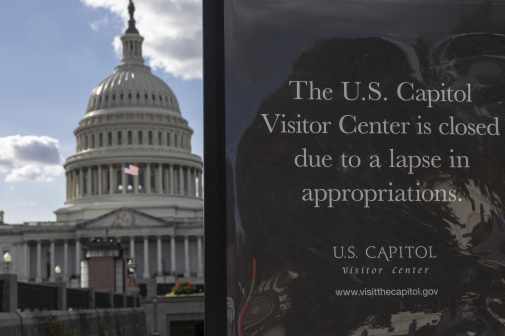Trump budget proposal would slash more than 1,000 CISA jobs

The fiscal 2026 budget proposal President Donald Trump unveiled last week would make deep cuts to the Cybersecurity and Infrastructure Security Agency workforce, with a goal of eliminating 1,083 positions and chopping its budget by $495 million, to $2.4 billion.
That’s a slightly deeper total cut than an earlier budget outline forecast. And a new document produced by the Department of Homeland Security details where those CISA personnel reductions would come from, alongside other documents that show planned decreases to other cybersecurity programs in the federal government.
The latest budget documents still don’t offer a full picture of Trump’s plans, as the administration hasn’t produced a full Defense Department budget blueprint, and Congress is awaiting delivery of a rescission package that would allow it to cement some of the federal funding cuts by the Department of Government Efficiency.
It’s also unclear what kind of fate awaits the Trump budget on Capitol Hill. The appropriations process of full-year funding bills has largely fallen by the wayside, with lawmakers instead routinely passing stopgap funding measures. But Republicans now control both chambers and the White House, and there are signs they want to avoid the stopgaps this year. There also have been bipartisan concerns about reductions for CISA specifically.
Still, the Trump budget puts forward the notion of big reductions at the agency, offset to some degree by the shift of the Countering Weapons of Mass Destruction Office into the agency from elsewhere in the department — for which the administration proposed $238 million and 163 positions in fiscal 2026.
The budget would seek to remove 325 positions through a workforce transition program, through which the administration offers deferred resignation, early retirement or a voluntary separation payment.
“CISA will maintain this reduction and will only backfill mission-critical positions, ensuring that essential functions continue to be supported while optimizing the workforce through these voluntary programs,” the DHS document states.
The next biggest personnel reduction would be simply not funding 301 vacant positions, “ensuring efficient resource allocation without impacting operations.”
“CISA has conducted thorough analyses to confirm that these reductions align with organizational needs and will maintain mission-critical functions,” the DHS document reads. “Streamlining vacant positions enhances operational efficiency while minimizing unnecessary expenditures.”
“Mission Support Enterprise Services” and “Stakeholder Engagement Consolidation” would each account for cutting more than 100 people.
The first category includes eliminating the Office of Equity, Diversity, Inclusion and Accessibility, and “it will streamline duplicative processes, functions, contracts, and contractor support in areas including, but not limited to, human capital, workforce engagement, financial management, and other general management and administrative areas.”
The second category includes elimination of things like the International Affairs office, with the justification that it would let CISA focus on its critical infrastructure sector risk management responsibilities. “This change shifts CISA’s mission space to solely support the SRMA [Sector Risk Management Agency] efforts and aligns with CISA’s priorities to strengthen critical infrastructure security while optimizing operational effectiveness,” the DHS document states.
Other proposed reductions include 71 positions in regional operations; 63 positions eliminated through the cancellation of federal funding for bombing prevention and federal school safety programs to “State and local responsibility” and “cyber and physical security exercises”; 35 positions at the National Risk Management Center; and 14 election security positions.
There would be other cybersecurity reductions at other agencies under the Trump budget. For instance, the Energy Department’s Office of Cybersecurity, Energy Security and Emergency Response would see a $50 million cut, to $150 million.
There’s no funding for a Federal Emergency Management Agency cybersecurity grant program that got $100 million in fiscal 2025. And the Office of the National Cyber Director would lose $2 million, to $20 million.






